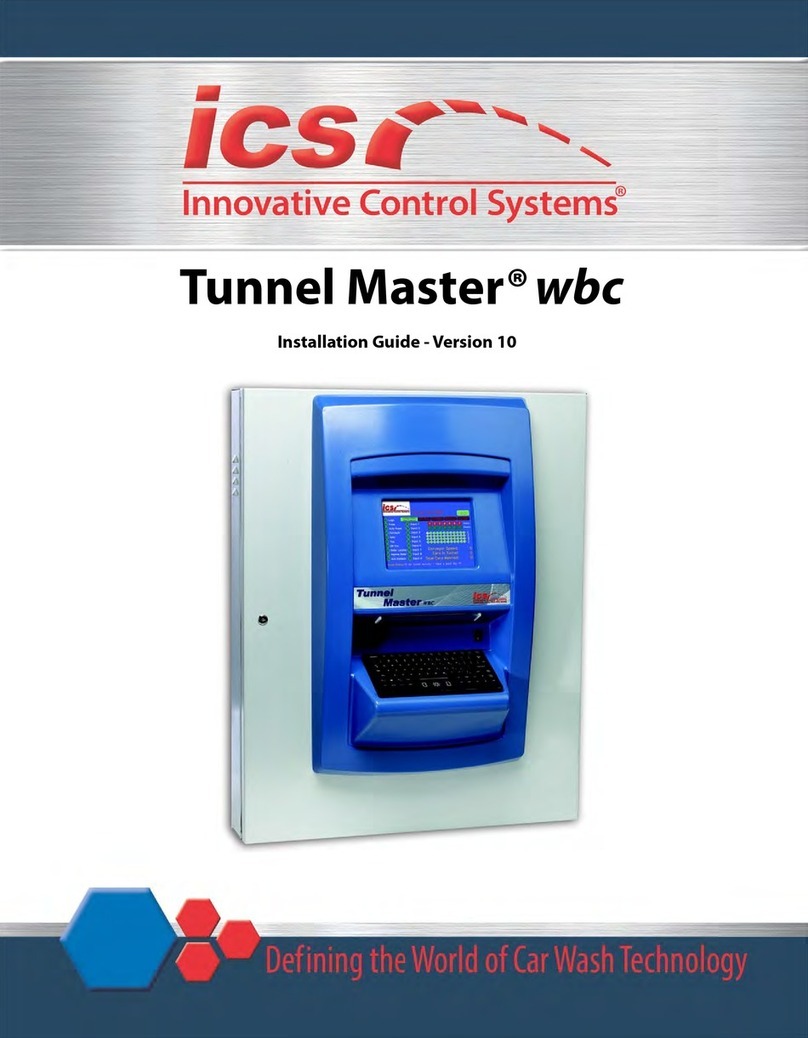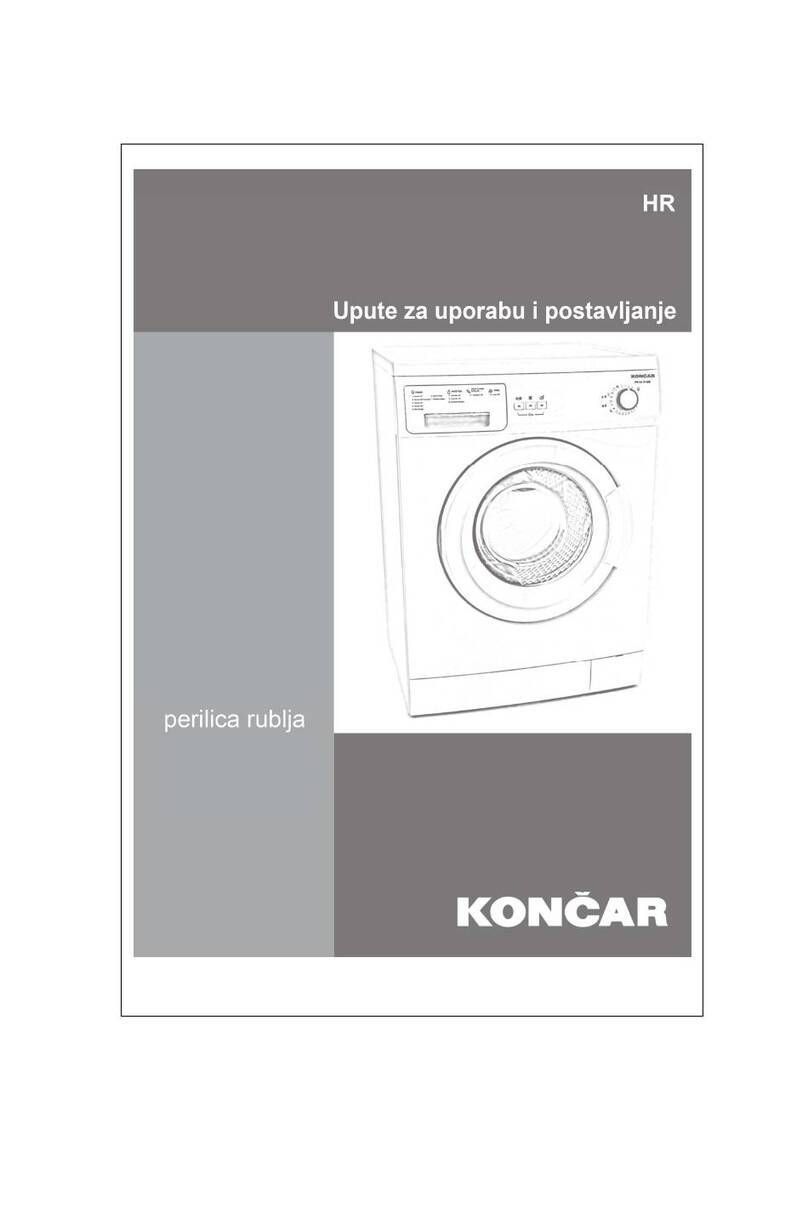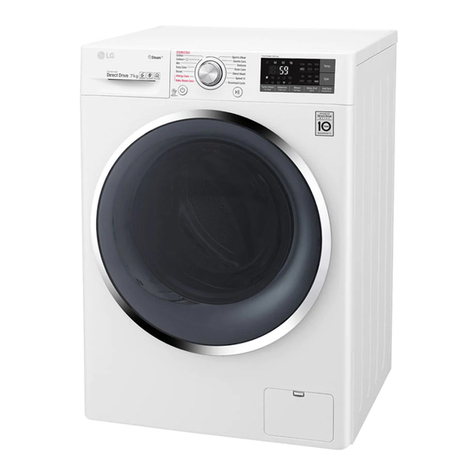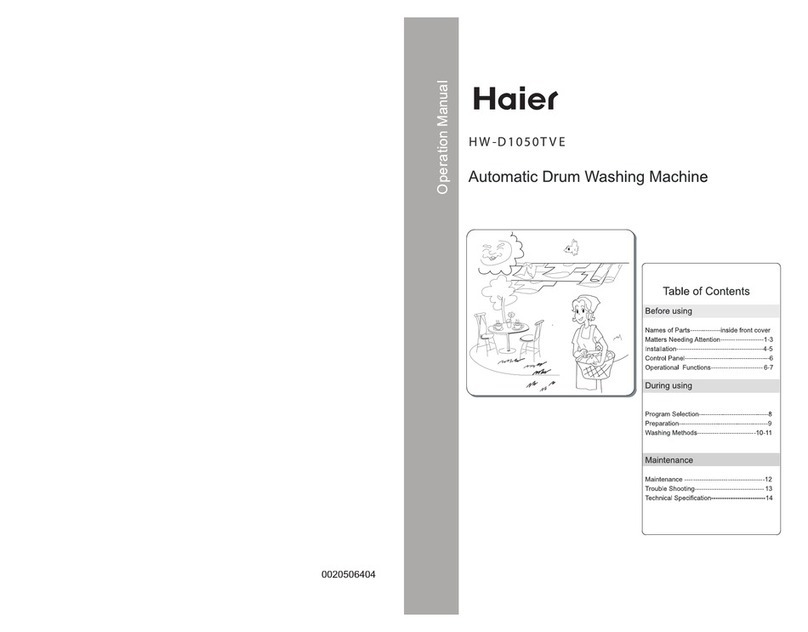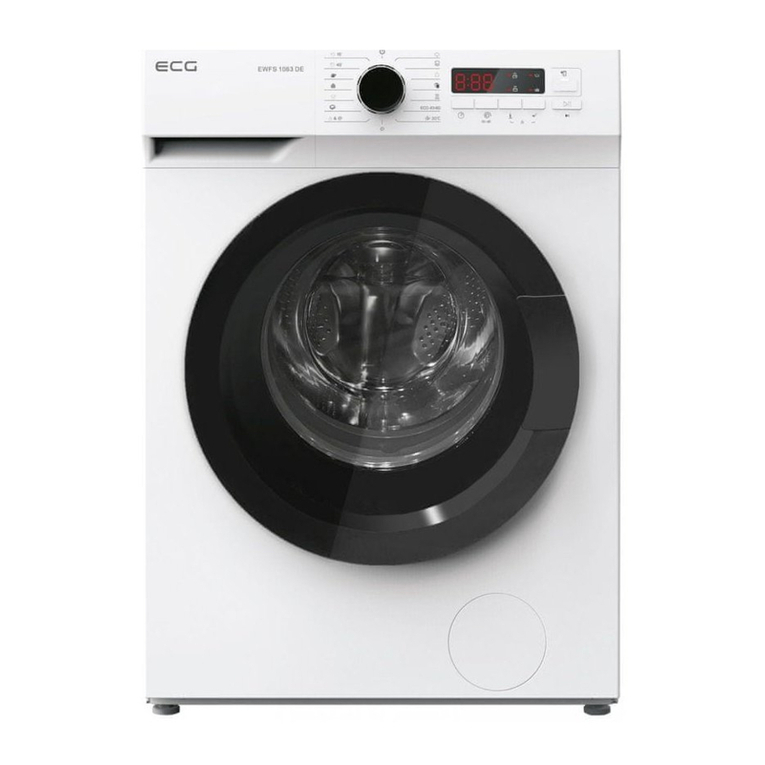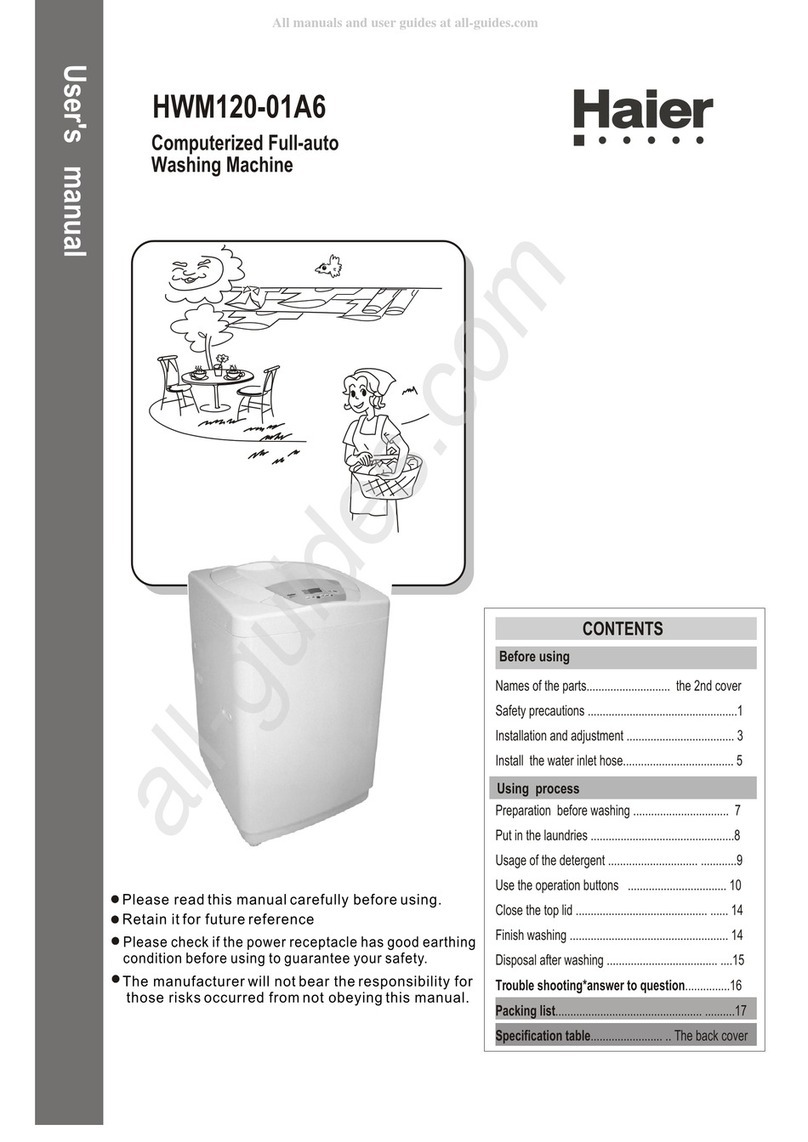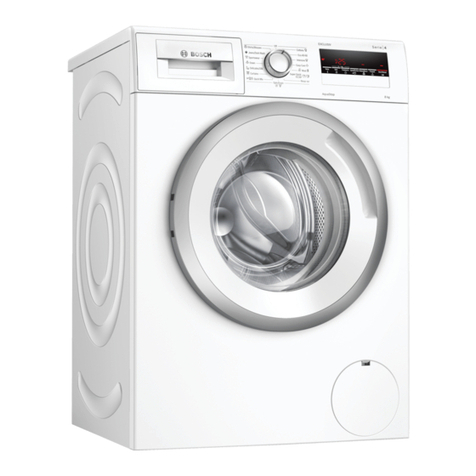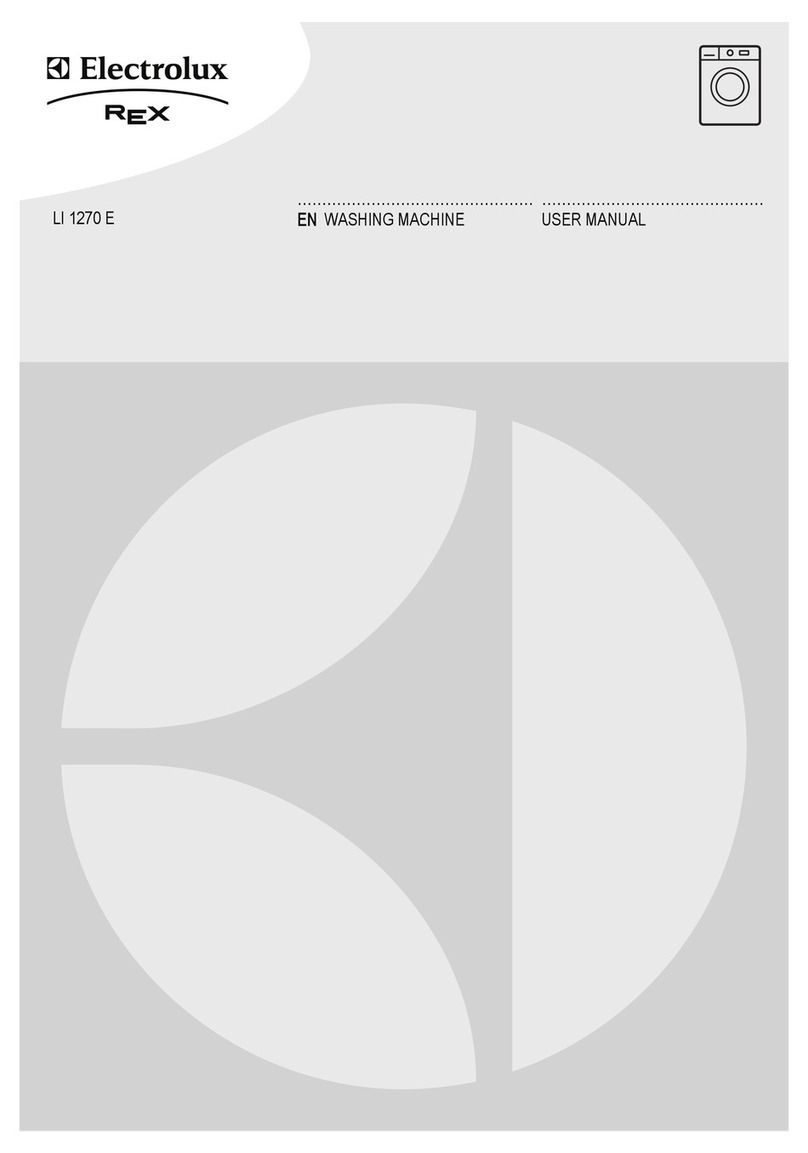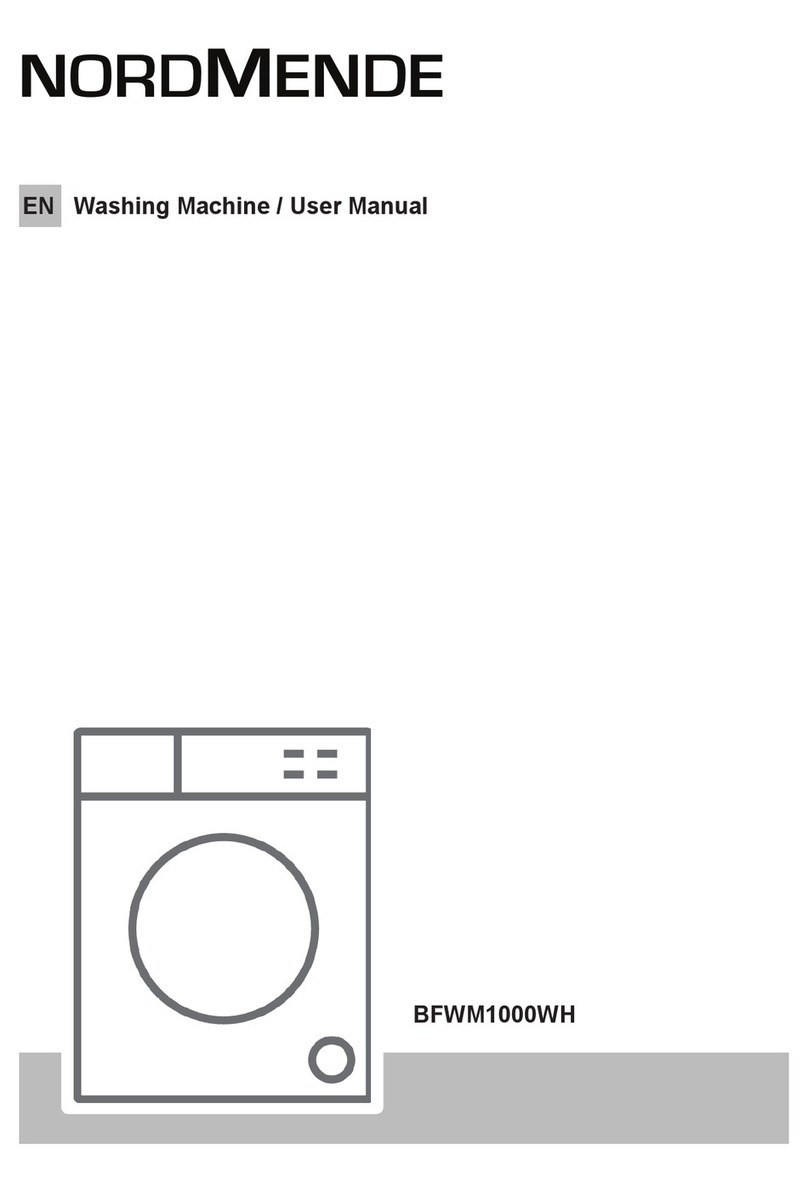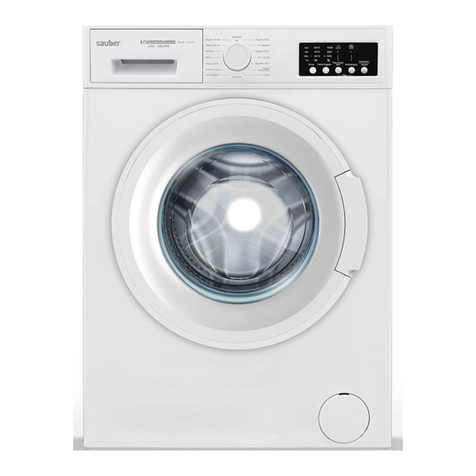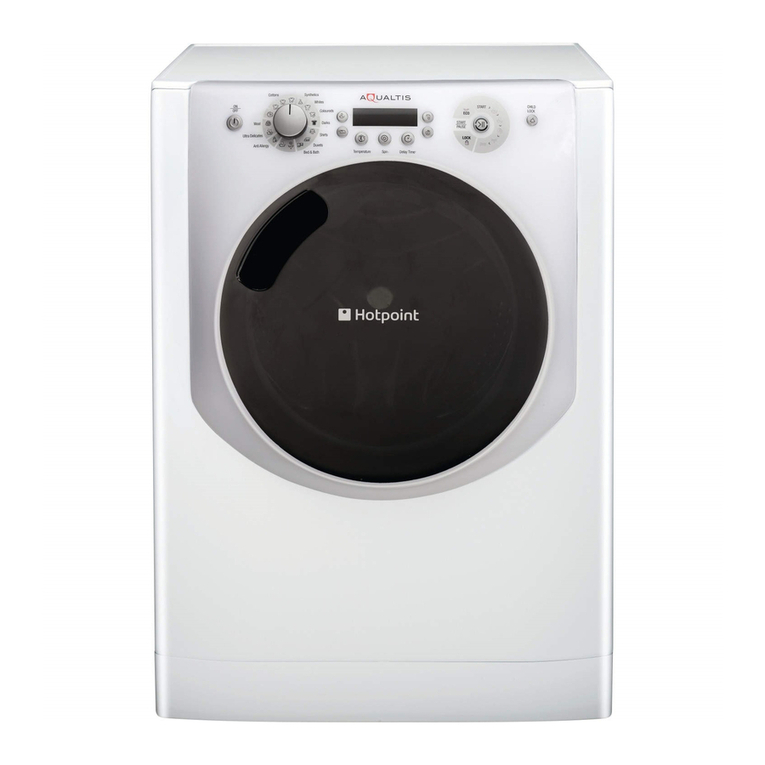JENFAB 12200283 User manual

TITLE
INVENTORY NUMBER DWG. NO.
SCALE NTS SHEET 1 OF 1
JOB NUMBER
APPR. ENGINEER
APPR. PRODUCTION
APPR. ESTIMATING
DRAWN BY
FINISH
DATE
DATE
DATE
DATE
THIS DOCUMENT OR OTHER DOCUMENT
CONTAINS PROPRIETARY INFORMATION OF
JRI HOLDINGS INC. AND IS NOT TO BE
USED, REPRODUCED, OR DISCLOSED
WITHOUT EXPRESSED WRITTEN PERMISSION
OF JRI HOLDINGS INC.
R.
VOESTALPINE
MCCS-4000SS2F APPROVAL DRAWING
12200283 12200283-23896-M-001
12200283
TSG 12/01/17
FRONT VIEW
PLAN VIEW
LOAD END
18 in
LOAD
9 in
ENTRY
48 in
PRE-WASH
9 in
DRAIN
9 in
ENTRY
30 in
WASH
6 in
DRAIN
48 in
BLOW-OFF
18 in
UNLOAD
234 in
12 in
BELT WIDTH42 in
PRE-WASH/WASH/
RUST INHIBIT TANK
423
4in
LOAD
HEIGHT
8 in
TUNNEL
OPENING
66 in
PRE-WASH TANK
260 GAL. APPROX.
48 in
WASH TANK
195 GAL. APPROX.
PRE-WASH
ACCESS PANELS
(2) RESTRICTIVE FLOW VALVES FOR PRE-WASH
(1) TIED TO UPPER/SIDE SPRAY
(1) TIED TO BOTTOM/SIDE SPRAY
WATER HEADER
1-1/2 in NPT CONNECTION
CPVC w/STAINLESS STEEL
SOLENOID VALVES
SPECIFICATION
VOLTAGE 460V 3PH 60Hz w/CUSTOMER SUPPLIED MAIN DISCONNECT; FLA = 202A
OVERALL DIMENSIONS 234 in L x 74 in W x 104in H
TANK CAPACITY PRE-WASH - 260 GAL. APPROX, WASH - 195 GAL. APPROX., RUST INHIBIT - 130 GAL. APPROX.
TUNNEL OPENING 13-1/4 in WIDE x 8 in TALL
BELT TYPE 12 in WIDE-1 in x 1 in SS
INDEXING BELT INDEX 6 in, ADJUSTABLE BELT SPEED, SET AT 4 fpm
FIXTURE SS FIXTURE NEST, INSTALLED ON 6 in CENTERS w/QUICK RELEASE CHANGE OVER
WEIGHT CAPACITY 500 lbs WEIGHT CAPACITY EVENLY DISTRIBUTED
LOAD HEIGHT 42-3/4 in APPROX.
PRE-WASH PUMP MOTOR SIZE / OUTPUT 5 HP 230/460V 3PH / 70 GPM @ 30PSI
WASH PUMP MOTOR SIZE / OUTPUT 3 HP 230/460V 3PH / 50 GPM @ 30PSI
RUST INHIBIT PUMP MOTOR SIZE / OUTPUT 3 HP 230/460 3PH / 40 GPM@ 30 PSI
FILTRATION SYSTEM FILTRATION SYSTEM, 8 x 15 SS w/SNUBBER GAUGES (PRE-WASH, WASH, & RUST INHIBIT)
OS-100SS2 OIL SKIMMER w/12 in SS WHEEL & FRAME (PRE-WASH)
CHIP BASKET SS CHIP TRAY w/SS 1/16 in PERFORATED CHIP BASKET (PRE-WASH & WASH)
TANK HEAT TYPE (1) 40 KW 460V 3PH @ 140°F - PRE-WASH, (1) 27 KW 460V3PH @ 140° F -WASH, (1)27 KW
460V 3PH @ 140° F - RUST INHIBIT
RESTRICTIVE FLOW VALVES RESTRICTIVE FLOW VALVES - ONE TIED TO UPPER/SIDE SPRAY - ONE TIED TO BOTTOM/SIDE
SPRAY (PRE-WASH, WASH, & RUST INHIBIT)
PRE-WASH, WASH, & RUST INHIBIT SPRAY CLIP ON BEX BRAND NOZZLE BASES w/SS NOZZLES, TOP, BOTTOM, & STATIONARY LOWER
SIDE SPRAY. SS NOZZLES ADJUSTABLE UPPER SIDE SPRAY
TANK WATER FILL AUTO & MANUAL FILL, INCOMING WATER LINES & VALVES CPVC w/STAINLESS STEEL
SOLENOID VALVES, 1-1/2 in NPT CONNECTION
DRAIN BLACK IRON DRAIN HEADER w/TANK DRAINS CONNECTED TO BRASS BALL VALVES, INCLUDES
PLUMBING TANK OVERFLOWS TO DRAIN HEADER, 1-1/4 in NPT CONNECTION
INSULATION INSULATE TANK, BLOWER PLENUM, & BLOWER PRESSURE DUCT - SS SKINS
ACCESS SIDE ENCLOSURE REMOVABLE ACCESS PANELS FOR EACH STAGE & TOP ACCESS
THROUGHOUT ENCLOSURE
BLOW-OFF 20 HP REGEN BLOWER - AIR KNIVES - (7) TOP, (7) BOTTOM,(3) STATIONARY LOWER SIDE
CONE NOZZLES, (4) ADJUSTABLE UPPER SIDE CONE NOZZLES
BLOW-OFF HEAT TYPE 30 KW AIR FIN TYPE @ 180° F
DRIVE MOTOR DRIVE MOTOR - 1/2 HP AC 480V 3PH - OPERATINGSPEED 1-4 fpm
SLIP CLUTCH SLIP CLUTCH 1 in BORE 190 lb
ELECTRICAL ENCLOSURE INDUSTRIAL CONTROLLED
MICROLOGIX MICROLOGIX 1400 PLC w/6 in COLOR EATON HMI
PAINT NO PAINT - 2B FINISH - MILD STEEL SURFACES TO BE PAINTED BLACK
FOR APPROVAL
APPROVED APPROVED AS MARKED
APPROVED BY ____________________ DATE __________
27 KW HEATER
40 KW HEATER
234 in
APPROX.
E-STOP
36 in
RUST INHIBIT TANK
130 GAL. APPROX.
ENTRANCE
9 in
DRAIN
6 in
ENTRY
24 in
RUST
INHIBIT
E-STOP
74 in
APPROX.
5 HP VERTICAL PUMP
STAINLESS STEEL GUSHER
70 GPM @ 30 PSI
E-STOP
E-STOP
EXHAUST RING
FOR A 8 in DIA.
DUCT CONNECTION
WASH ACCESS
PANEL
RUST INHIBIT
ACCESS PANEL
BLOW-OFF
ACCESS PANELS
20 HP HIGH
PRESSSURE BLOWER
w/30 KW HEAT
104 in
APPROX.
FILTRATION SYSTEM
8 in x 15 in 6-BOLT
STAINLESS STEEL
BLACK IRON DRAIN HEADER
1-1/4 in NPT CONNECTION
OIL SKIMMER
w/12 in SS WHEEL
& FRAME
OIL CONTAINMENT
BOX
FILTRATION SYSTEM
8 in x 15 in 6-BOLT
STAINLESS STEEL
3 HP VERTICAL PUMP
STAINLESS STEEL GUSHER
50 GPM @ 30 PSI
27 KW HEATER
FILTRATION SYSTEM
8 in x 15 in 6-BOLT
STAINLESS STEEL
3 HP VERTICAL PUMP
STAINLESS STEEL GUSHER
40 GPM @ 30 PSI
(2) RESTRICTIVE FLOW VALVES FOR WASH
(1) TIED TO UPPER/SIDE SPRAY
(1) TIED TO BOTTOM/SIDE SPRAY
(2) RESTRICTIVE FLOW VALVES FOR RUST INHIBIT
(1) TIED TO UPPER/SIDE SPRAY
(1) TIED TO BOTTOM/SIDE SPRAY
CHIP
BASKET CHIP
BASKET
A
DETAIL A
SCALED 4:1
15°
51
4in
711
16 in
107
8in
PARTS
ADJUSTABLE NOZZLES &
BLOW-OFF CONE NOZZLES
TO HAVE 6 in ADJUSTMENT
FIXTURE
6 in6 in E-STOP
ELECTRICAL
CONNECTION
ELECTRICAL
ENCLOSURE
ELECTRICAL
ENCLOSURE
1
32
54
76
98
Learning to Use
JENFAB Belt Washers
#12200283
BW–001 12/19/06

2 Learning to Use JENFAB Belt Washers
Where to Find More Information
JENFAB Aqueous Cleaning Systems provides these resources to
ensure you get the most from our products.
Turnover Package
In addition to this user guide, we ship our belt washers with a CD
ROM that includes: (1) OEM user guides for major components,
(2) engineering drawings of the belt washer, and (3) the washer’s
control program (if equipped with automatic controls).
Materials Safety Data Sheets
Material safety data sheets provide safety information about common
cleaning chemistries and are available from JENFAB upon request.
Support Services
Call the JENFAB customer support team to receive answers to
your technical questions and order parts. You can reach the JENFAB
customer support team, Monday through Friday, 8:00 a.m. to
5:00 p.m. Eastern Standard Time at 1–860–828–6516.
Web Site
You can also learn more about our products by visiting our website,
www.jenfab.com.
Cover Photo—Typical JENFAB belt washer

Learning to Use JENFAB Belt Washers 3
Important Information
Read the safety instructions in this manual before using your belt
washer and keep these instructions accessible for future reference.
JENFAB will provide replacement user guides upon request.

4 Learning to Use JENFAB Belt Washers
Table of Contents
Preface
Welcome to the User Guide......................................................................... 6
Belt Washer Safety......................................................................................... 6
Safety Warnings.............................................................................................. 7
Statement of Proper Use .............................................................................. 7
Product Overview
What the Belt Washer Does......................................................................... 8
Manual and Automatic Systems .................................................................. 8
Key Operating Benefits................................................................................. 8
Optional Features ........................................................................................ 11
Description of Components
Overview of the Belt Washer..................................................................... 14
Overview of Process Components ........................................................... 16
Conveyor Belt Adjuster............................................................................... 19
Optional Oil Separator (external).............................................................. 20
Manual System Controls............................................................................. 21
Installation and Setup
Preparation.................................................................................................... 23
Unpacking the Belt Washer........................................................................ 23
Choosing a Location.................................................................................... 23
Connecting Optional Equipment.............................................................. 24
Utility Requirements and Connections..................................................... 25
Operating the Belt Washer
Cold Startup—Automatic System............................................................. 30
Cold Startup—Manual System .................................................................. 33
Using the Manual Push Button Control Panel........................................ 36
Description of Controls.............................................................................. 36
Using the Dryer Temperature Controller ................................................ 38

Learning to Use JENFAB Belt Washers 5
Troubleshooting
Troubleshooting Chart................................................................................ 39
Inspection and Maintenance
Inspection, Maintenance and Cleaning Recommendations .................. 40
Cleaning the Chip Baskets.......................................................................... 41
Replacing Filter Bags................................................................................... 43
Cleaning the Mini External Coalescing Oil Separator (If Equipped) .. 45
Cleaning the 45- and 65-Gallon JENFAB External Coalescing Oil
Separators (If Equipped) ............................................................................ 47
Cleaning the Optional Disk Oil Separator (If Equipped) ..................... 48
Inspect for Salt and Debris Buildup on Tank Components ................. 49
Adjusting the Conveyor Belt Tension ...................................................... 51
Spare and Replacement Parts
How to Order Parts..................................................................................... 52
Mechanical Parts List................................................................................... 52
Electrical Parts List...................................................................................... 52
Specifications
Technical Specifications.............................................................................. 53
Appendix A—Operator Interface Windows

6 Learning to Use JENFAB Belt Washers
Preface
Welcome to the User Guide
This user guide describes how to use JENFAB belt washers.
JENFAB manufacturers numerous models of belt washers and we
modify many of them to customer requirements. Hence, this user
manual describes the use of our belt washers in general—principals of
operation, safety considerations, typical components, and descriptions
of optional equipment.
For additional information about your specific belt washer, see the
engineering drawings and OEM user guides supplied on your system’s
CD-ROM. If you have questions about operating your specific belt
washer after reading this manual and consulting the OEM user guides,
call the JENFAB technical support team for assistance before using
your belt washer.
Belt Washer Safety
To reduce the risk of fire, electric shock, and personal injury, read
the instructions in this user guide before operating your belt washer.
Follow all safety instructions. Retain this user guide for future
consultation and training.
General Safety Considerations
These are the key global safety instructions you should follow when
operating FENFAB belt washers:
In an emergency, pressing the Emergency Stop button will immediately
stop all machine functions.
Guards and interlocks protect operators from moving parts and
unintended operation. Do not operate the cleaning machine unless
all guards and interlocks are in place.
Do not run the machine with tank covers, cleanout, and inspection
covers open.
Before performing major maintenance on the machine, follow your
plant’s lockout/tagout procedures and OSHA safety procedures.

Learning to Use JENFAB Belt Washers 7
Use JENFAB washers with aqueous cleaning solutions. Do not use
flammable solvents. Cleaning chemistries should be compatible
with 304 stainless steel.
Hot cleaning chemistries can cause bodily harm. User-supplied
eye wash and emergency showers should be located near the belt
washer.
International Symbols
This symbol indicates a dangerous voltage—that may constitute
a risk of electrical shock—is present within the enclosure.
This symbol indicates that the product literature contains
important operating and maintenance instructions.
Safety Warnings
This user guide provides guidance and safety instruction using the
following notations:
Expert Advice—Expert advice flags provide you with information that
will help you use JENFAB cleaning machines in the most effective way.
Caution—Caution flags notify you of actions that could damage
the equipment or your products and provide you with information to
prevent damage.
Warning—Warning flags notify you of action that could cause bodily
harm or death and provide you with information to prevent harm.
Statement of Proper Use
JENFAB designs belt washers to clean parts using aqueous solutions
and controlled operation within the wash, rinse, and drying sections. If
you use a belt washer in a manner not specified by JENFAB, you may
impair the protection provided by the equipment.
!

8 Learning to Use JENFAB Belt Washers
Product Overview
What the Belt Washer Does
JENFAB belt washers clean parts by spraying wash and rinse solutions
on them as they travel along a conveyor belt. After washing and
rinsing, a fan dries the parts using heated air. All of the cleaning
processes take place in an enclosed, cellularized system.
Process solutions range from simple wash chemistries and plain water
rinse, to complex heated washing and rinsing chemistries that include:
prewash, wash, rinse, and secondary rinse with rust inhibitors or other
treatments.
Controls on JENFAB belt washers range from simple push button
operation to automated systems with PLC and touch screen monitors.
Manual and Automatic Systems
JENFAB manufactures both manual and automatic systems.
Manual systems use simple pushbutton and manual controls to start
and stop the washer and regulate functions such as conveyor belt
speed and process temperatures. Automatic systems use a PLC for
control of process parameters and a touch screen display to provide an
operator interface to the control system. Automatic systems usually
include several pushbuttons for control of basic operations such as
power-up, start, stop, emergency stop, and belt speed.
Key Operating Benefits
A key operating benefit of our belts washers is the high volume
of solution sprayed over the parts, which flushes away chips, soils
and oils, and keeping fresh, clean solution in contact with the parts.
Chip baskets remove large contaminants from the process streams.
Inline filters remove fine contaminants from the process streams.

Learning to Use JENFAB Belt Washers 9
Typical Wash Sequence
As parts are conveyed through the washer, they typically are exposed
to these processes (Figure 1):
1. High pressure, high volumetric, recirculating spray from a
wash tank. The wash solution is normally heated and contains
wash chemistry.
2. Draining. Dwell time in a cellular compartment combined
with the open conveyor belt drains wash solution from parts.
Vestibule provides a cell between wash and rinse cells to
minimize contamination between wash and rinse solutions.
3. High pressure, high volume, recirculating spray rinse. Rinse
solution from standard rinse tank or counter flow rinse tank.
4. Draining. Dwell time in a cellular compartment combined
with the open conveyor belt drains wash solution from parts.
5. Optional. Second high pressure, high volume, recirculating
spray rinse. Rinse solution from counter current rinse tank or
from isolated tank that can include product treatments such as
rust inhibitors.
6. Draining. Dwell time in a cellular compartment combined
with the open conveyor belt drains wash solution from parts.
7. Drying. Recirculating hot air dryer dries parts.

10 Learning to Use JENFAB Belt Washers
Figure 1. Typical washing sequence with optional
second spray rinse section

Learning to Use JENFAB Belt Washers 11
Optional Features
The sections below describe optional equipment available on JENFAB
belt washers. Check your belt washer or your purchasing specifications
to determine which options your machine includes.
Upgrade to Automatic Controls
Belt washers are typically manual systems. Automatic control is
available as an option. Automatic systems use a PLC for control of
some process parameters. A touch screen display provides an operator
interface to the control system. Automatic systems usually include
pushbuttons for basic functions such as power-up, start, stop,
emergency stop, and drum speed control.
Oil Separators
Coalescing Type
JenFab manufactures several sizes of coalescing oil separators
(15-, 45-, and 65-gallon) for use with our belt washers. Mini (15-gallon)
separators can be built in to the belt washer or stand as an external
unit. The 45- and 65-gallon separators stand as external units and are
piped up to the belt washer.
A coalescing oil separator extends bath life by continually removing
oils from the wash solution.
In a coalescing oil separator, oleophilic (oil attracting) coalescing tubes
capture, agglomerate, and float oil globules to the surface where an
adjustable weir discharges the oil from the separator. The tubes
consistently remove oil globules of 20 microns and larger in size.
The separator removes only oil, not chemistry.
Disk Type
A disk-type oil separator can be installed in the wash tank as an option.
Disk-type oil separators use a rotating disk that is half submerged in
the wash water. As the disk rotates, it carries oil from the wash water.
Scrapers scrape the oil from the disk, and the oil is channeled to a
user-supplied collection vessel.

12 Learning to Use JENFAB Belt Washers
Drain Station
For applications where the overflow from the belt washer cannot
drain by gravity to a drain, a drain station collects the overflow from
the process tanks and pumps it to an elevated drain or waste water
tank. The drain station includes a tank (built-in or external) with a
pump and high/low level control linked to a control system. When
the drain station tanks fills up, it is automatically pumped out,
removing the overflow from the belt washer.
Tank Clean-Out Doors
Optional manhole-size doors on the side of large wash and rinse
tanks ensure complete draining of the tanks and allow entry for
manual cleaning.
Conveyor Options
Conveyor options include entrance- and exit-end staging conveyors
or 90-degree conveyors to enable one operator to load and unload
the cleaning machine.
Part Guiding
Optional part guides installed along the length of the conveyor belt
keeps parts centered or orientated in a specific direction as they pass
through the belt washer.
Chemical Feed Option
A Dosatron injector metering valve can automatically meter chemistry
into wash or rinse makeup water, thus automatically maintaining
required chemistry strength.
Air Knife
An optional air knife located between the wash and rinse sections
helps remove wash water from the parts and belt to reduce wash water
carryover into the rinse water. Likewise, as the lower belt moves in the
opposite direction, the air knife removes rinse water from the belt and
prevents it from being carried over and diluting the wash water.

Learning to Use JENFAB Belt Washers 13
Second Rinse Section
An optional second rinse section enhances removal of washing
chemistry by providing either a fresh water, counter current, or rinse
chemistry spray to further rinse parts. The second rinse option
includes a separate spray section and rinse tank.

14 Learning to Use JENFAB Belt Washers
Description
of Components
Overview of the Belt Washer
The typical features and components on a belt washer include
these (Figure 2):
Conveyor belt—open mesh stainless steel belt transports parts
through the washing, rinsing and drying sections.
Lift-off access covers—tank, side, and top covers lift off easily for
access to the machine for inspection and maintenance. Some covers
can be interlocked with the control system to prevent the belt washer
from starting when operators have the covers removed.
Main power disconnect—removes all power from system
components.
Manual system operator controls—operator controls on a manual
system can consist of pushbuttons, switches, dials, and simple
temperature controllers.
Electrical control panel—houses electrical and control equipment.
Inline filter—belt washers can include one or more inline filters
to filter the wash and rinse solutions.
Oil separator—belt washers can include three types of optional oil
separators including disk oil separators
In-tank vertical pumps—these pumps provide the best performance
for pumping wash and rinse solutions to the spray nozzles.
Tank heating controls—manual systems include dial controllers for
regulating tank heating
Dryer blower—a blower circulates heated air to dry the parts

Learning to Use JENFAB Belt Washers 15
Figure 2. Typical belt washer components (manual
system)
Lift-off tank
covers
Inline filter
Electrical
control panel
In-tank sealless
vertical pumps
Lift off covers
Conveyor
belt
Operator
controls
Disk oil separator
Main power
disconnect
In-tank sealless
vertical pumps
Dryer blower

16 Learning to Use JENFAB Belt Washers
Overview of Process Components
Inline Filters
Belt washer can include wash and rinse water inline filters to remove
contaminates, thus improving cleaning performance and extending the
life of wash and rinse solutions (Figure 3). The inline filters use cloth
bag filters that you replace periodically based on the inlet/outlet
differential pressure.
Figure 3. Belt washer inline filters
Wash Tank Components
Bleed line
Filter inlet
Inlet valve
Filter drain line
Filter outlet
Inlet pressure gauge

Learning to Use JENFAB Belt Washers 17
Typical wash tank components include heating element, temperature
probe and transmitter, and low and high level floats and transmitters.
Manual System Process Tank Components
Temperature Control—In manually-controlled systems, the process tanks
usually include electric heating elements controlled by a manual,
dial-type temperature controller mounted above the tank .Operators
turn the temperature control knob to the desired temperature setting,
and the controller regulates the heating
elements to maintain the desired temperature. Heating systems can
also be powered by electricity, steam, or gas.
Liquid Level Control—If the liquid level in the tank falls too low, a low level
float and transmitter shut off the heating element and stop the pump
to prevent damage to the heating elements and pump.
Chip Baskets—Most wash and rinse tanks include chip baskets that
remove chips from the wash or rinse stream. You can remove the
chip baskets for cleaning.
Figure 4. Manual heat controller for process tank
Turn the temperature
control knob to the desired
temperature to adjust the
temperature in the tank
Indicator light illuminates
when heating element is
receiving power
120°F

18 Learning to Use JENFAB Belt Washers
Low level float
Heating elements can
be electric, steam, or
even gas operated
Water makeup float
Temperature probe and
transmitter send temperature
readings for display on the
control panel and for automatic
temperature control.
Automatic System Process Tank Components
Temperature Control—The wash tanks in automatic systems include:
heating elements, temperature probes and transmitters, and liquid level
floats and transmitters. Tank heating is automatically controlled based
on the setpoints entered into the control system. Operators can
control the heating process manually when running the control system
in manual mode. Heating systems can also be powered by electricity,
steam, or gas.
Liquid Level Control—The water makeup soleniod and transmitter trigger
water makeup into the tank as the water level decreases. The low level
float and transmitter automatically cut power to the heating elements
and stop the pump if the tank level falls too low.
Chip Baskets—Most wash and rinse tanks include chip baskets that
remove chips from the wash or rinse stream. You can remove the
chip baskets for cleaning.
Figure 5. Typical tank components

Learning to Use JENFAB Belt Washers 19
Conveyor Belt Adjuster
Conveyor belts are usually chain driven and include tension adjusters
on the feed end of the machine. See page 51 to learn how to adjust the
belt tension.
Figure 6. Conveyor belt adjuster
Belt tension
adjusting screw
Belt pulley shaft
Conveyor belt

20 Learning to Use JENFAB Belt Washers
Optional Oil Separator (external)
A typical, optional, external oil separator used on belt washers is
a 45-gallon JENFAB coalescing oil separator (Figure 7). The oil
separator includes coalescing elements, oil skimmer, and a weir to
separate the oil from the wash solution. A return line and pump return
the cleaned wash water back to the wash tank.
Figure 7. Typical JENFAB coalescing external oil
separator
Skimmed oil outlet
Liquid level transmitter
Fresh water makeup inlet
Drain lines
Clean wash
water return
and pump on
back side (not
shown)
Gravity supply line
Table of contents

